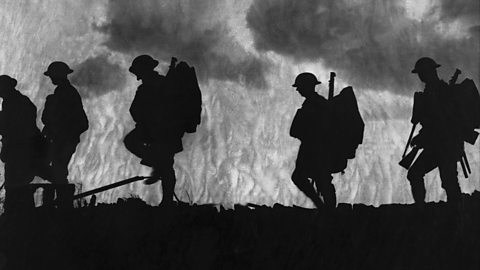What do you know?
Do the words âsoulâ and âallâ rhyme?
You might think not, but read on to find out why they do and what type of rhyme they share.
Introduction to how to rhyme effectively
Could you be a poet even if you donât know it? Do you think rhyme is fine?
Key learning points
Different types of rhyme and their effects, including:
- perfect rhyme
- half rhyme
- end rhyme
- internal rhyme
- masculine and feminine rhyme
Video about how to rhyme effectively
A video about the different types of rhyme and how they work
Rhyme battle: Round 1- Perfect rhyme versus imperfect rhyme.
Letâs hear it for perfect rhyme:
Perfect rhymes are all around
Chill, thrill, skill, hill
Mountain, fountain, water, daughter
Hear the perfect matching sound?
Imperfect rhyme step forward:
When daughter rhymes with otter
and doctor and author
That rhyme isnât perfect
Youâre close⊠almost⊠sort of
Rhyme battle: Round 2 â Masculine rhyme vs feminine rhyme.
Introducing feminine rhyme:
Hear how both syllables rhyme, as in singing and ringing
Lighter and fighter or booster and rooster
A feminine rhyme sounds so lovely and swinging
Can masculine rhyme beat that?
If only a wordâs last syllable rhymes, donât be distressed
A masculine rhyme has been expressed
Rhyme battle: Final round - Internal rhyme vs end rhyme.
Letâs hear some internal rhyme:
Hey diddle diddle watch me rhyme in the middle of the line
Itâs a bit of a fiddle and a lot of a riddle, but can you hear it all the time
Used in many nursery rhymes, but itâs also heard in rap:
Spit bars, go far with the stars, rhyme the middle, be the bizzle.
How about that?â
Aaaaaand finally End rhyme
When sounds match up at the end of a line
Itâs called âend rhymeâ and sounds mighty fine
So who wins the battle?
And the prize of a rattle?
Letâs call it a draw? Okay, thatâs fine.
What is rhyme?
When words have similar sounds, we often say they rhyme. Poetry and songs often use rhyme, because it sounds good and because the repetition of sounds can give a sense of rhythm to the words.
When poets use rhyme in regular places within their poems, this is called a rhyme scheme.
The matching sounds can be at the ends of words, for example:
The frog was agog at the size of the log
This is a very common type of rhyme and it sounds quite satisfying. The matching sounds are at the end of the words so they are more similar than they are different.
However, rhyme isnât only used for matching sounds at the ends of words, for example:
The scent of the flower was overpowering
The rhyme in these words is in the middle, and the ends of the words are different.
There are many different types of rhyme, but there is one thing in common: rhyme is always about matching sounds.

Can you think of a word to rhyme with these words?
When youâve written down your examples, click to see some examples.
- rhyme
- word
- sound
- matching
- âRhymeâ can be rhymed with chime / dime / lime / mime / prime / time
- âWordâ can be rhymed with bird / furred / herd / heard / stirred / third
- âSoundâ can be rhymed with bound / crowned / frowned / hound / ground / round
- âMatchingâ can be rhymed with attaching / catching / hatching / scratching
Perfect rhyme and half rhyme
When we speak words, we tend to emphasise certain parts of the words. For example we might say âletterâ with an emphasis on the âletâ at the start. This is called a stressed syllable.
Perfect rhyme is what we call words with matching sounds in their stressed syllables and anything that comes after that stressed syllable, like âletâ and âbetâ, or âletterâ and âbetterâ.
Sometimes, poets rhyme unstressed syllables, or a stressed syllable of one word with an unstressed syllable of another word, like âpaintingâ and âringâ. The rhyme here is on the âingâ sound at the end of the word, but the stressed syllable is not the same. This is called half rhyme, or imperfect rhyme.
In the opening lines of Happy Birthday Moon, the poet Raymond Antrobus uses half-rhyme:
Dad reads aloud. I follow his finger across the page.
Sometimes his finger moves past words, tracing white space.
Here the words âpageâ and âspaceâ almost rhyme â the sound âpayâ within the words is the same but the rest of the word does not rhyme.
End rhyme and internal rhyme
End rhyme is as simple as it sounds: itâs when poets rhyme words at the ends of lines. This is the type of rhyme that is shown by a rhyme scheme. For example, this AA rhyme scheme:
Roses are red, violets are blue,
Sugar is sweet, and so are you.
However, rhymes can also happen between words that are not at the ends of lines. This type of rhyme is called internal rhyme. Here is an example from Edgar Allan Poeâs poem The Raven:
Once upon a midnight dreary, while I pondered, weak and weary,
Over many a quaint and curious volume of forgotten loreâ
    While I nodded, nearly napping, suddenly there came a tapping,
As of some one gently rapping, rapping at my chamber door.
ââTis some visitor,â I muttered, âtapping at my chamber doorâ
      Only this and nothing more.â
If we look back at the example from Macbeth, we can see that Shakespeare also used internal rhyme as well as end rhyme:
Double double toil and trouble;
Fire burn and caldron bubble.
Complete the internal rhyme
Masculine and feminine rhymes
When two words end with a rhyming stressed syllable, it's called masculine rhyme. Here are some examples of masculine rhyme:
- Dog and frog
- Long and wrong
- Compare and beware
- Produce and reduce
Masculine rhymes can often sound strong and definite, because the rhyme is on the final, stressed syllable.
However, if the stressed syllable that rhymes is not the final syllable of the word and so the word ends with a rhymed unstressed syllable, it's called feminine rhyme. Here are some examples of feminine rhyme:
- Duty and beauty
- Measure and leisure
- Double and trouble
- Rumour and humour
Remember, feminine rhyme is still perfect rhyme, so everything after the rhymed stressed syllable should also rhyme. If not, this would be an example of , or imperfect rhymeWhen poets rhyme unstressed syllables, or a stressed syllable of one word with an unstressed syllable of another word, like âpaintingâ and âring' This is also known as half rhyme..
Effect of rhyme in poetry
Rhyme in poetry can have many different effects, but some of the most common effects include:
- creating a rhythm
- emphasising the rhymed words
- connecting words and ideas
For example, if we look at a traditional nursery rhyme:
Humpty Dumpty sat on a wall,
Humpty Dumpty had a great fall.
All the Kingâs horses and all the Kingâs men,
Couldnât put Humpty together again.
This uses masculine rhyme in an AABB rhyme scheme to create a simple and memorable rhythm and rhyme.
In Shakespeareâs Macbeth:
Double double toil and trouble;
Fire burn and caldron bubble.
Here, Shakespeare has used internal and end rhyme with a feminine rhyme to create a spell-like rhythm. The rhyme connects the words âdoubleâ, âtroubleâ and âbubbleâ, which suggests the witches are making a potion or a spell that will cause many problems.

What do you think is the effect of the rhyme used in the first stanza of Emily Dickinsonâs poem Hope is the thing with feathers?
âHopeâ is the thing with feathers â
That perches in the soul â
And sings the tune without the words â
And never stops â at all â
- Dickinson uses an ABCB rhyme scheme with end rhyme to emphasise the words âsoulâ and âallâ as these are important to the meaning of the poem.
- Dickinson uses half-rhyme of âsoulâ and âallâ to suggest the fragility of the idea of hope, rather than a perfect rhyme which would sound more certain and definite.
Test your knowledge
Play Bitesize secondary games. gamePlay Bitesize secondary games
Have fun playing science, maths, history, geography and language games.

More on Writing poetry
Find out more by working through a topic
- count2 of 3

- count3 of 3
